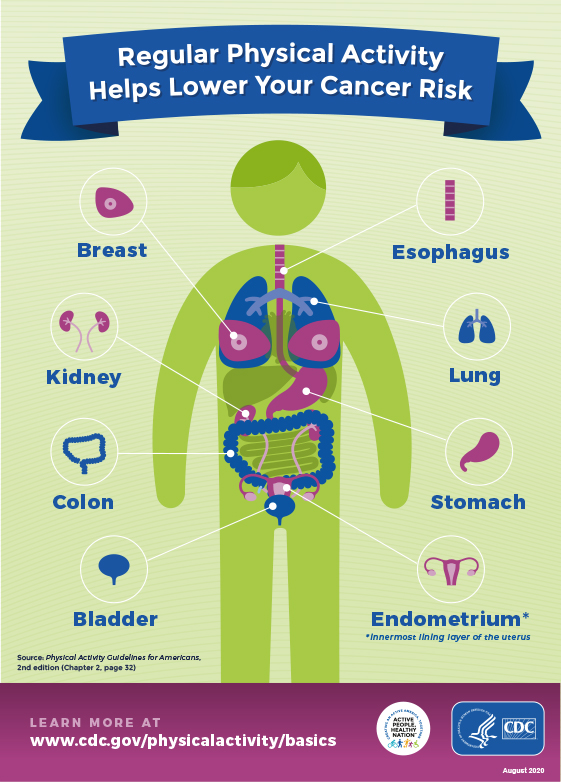Cancer Prevention
Unique circumstances of culture, location, history and healthcare combine to produce unusual patterns of cancer occurrence among American Indians and Alaska Natives (AI/AN) in the United States1.
The 2011 Annual Report to the Nation on the Status of Cancer (1997-2008) cites overall that cancer death rates declined in each racial and ethnic group except AI/AN men, women, and children, where the declines were not significant. Similarly, death rates for the most common cancers (lung, colorectal and prostate) decreased in all racial groups except AI/AN men2.
Behavioral risk factors associated with cancer are often much higher for the AI/AN population. These include smoking, being overweight, lack of physical activity, and poor diet. Higher rates of obesity and smoking are reported for the AI/AN population compared to other ethnic groups. Lower cancer screening rates are also documented for colon and breast cancer3.
In addition, many AI/AN populations experience conditions known to increase risk for disease and illness. These circumstances are shaped by the distribution of money, power, and resources at global, national, and local levels. Socioeconomics is a major contributor to health inequities—the unfair and avoidable differences in health status seen within and between communities. Recent publications report that AI/AN communities have lower educational attainment, less insurance coverage and less access to healthcare providers compared to the nonHispanic white population.
Fortunately, Tribes, tribal agencies and tribal healthcare systems are incorporating evidence-based interventions, including policy, system, and environmental changes aimed at reducing behavioral risk factors and improving timely access to quality health care.
Protect Yourself: Block the Sun, Not the Fun
Infographic developed by Great Plains Tribal Leaders Health Board to generate awareness for summer sun safety tips. Feel free to share widely.
Summer Sun Safety Tips
Infographic developed by Great Plains Tribal Leaders Health Board to generate awareness for summer sun safety tips. Feel free to share widely.
PSE Change Guide: Policy, Systems, and Environmental CHange in Comprehensive Cancer Control (2022)
The American Cancer Society and the Centers for Disease Control and Prevention have collaborated to release an updated version of the PSE Change Guide: Policy, Systems, and Environmental Change in Comprehensive Cancer Control. The 2022 guide is a practical tool that incorporates the latest research, case examples, and resources from partners across the country. The guide explains what the PSE change approach is, key themes from the recent literature, and the process for increasing coalition capacity to implement PSE changes.

Link Healthy people 2030
Obesity is a risk factor for cancer. Healthy People 2030 sets data-driven national objectives to improve health and well-being over the next decade.

Link CANCER AMONG AMERICAN INDIANS AND ALASKA NATIVES IN THE UNITED STATES, 1999–2004
Article detailing the varying rates of cancer among AI/AN populatiions across geographic regions and if racial missclassification may play a part in this.
Link ANNUAL REPORT TO THE NATION ON THE STATUS OF CANCER, 1975-2008, FEATURING CANCERS ASSOCIATED WITH EXCESS WEIGHT AND LACK OF SUFFICIENT PHYSICAL ACTIVITY
Report detailing cancers related to physical fitness and the importance of healthy lifestyles relating to cancer prevention.
Link SURVEILLANCE FOR HEALTH BEHAVIORS OF AMERICAN INDIANS AND ALASKA NATIVES—FINDINGS FROM THE BEHAVIORAL RISK FACTOR SURVEILLANCE SYSTEM, 2000–2006
Report detailing survellance of health behaviors among AI/AN communities and the differences across regions.
Link AI/AN GUIDE TO PREVENTABLE CANCERS
Guide that covers information regarding preventable cancersamong the AI/AN community, such as breast, cervical, skin and testicular cancers.

